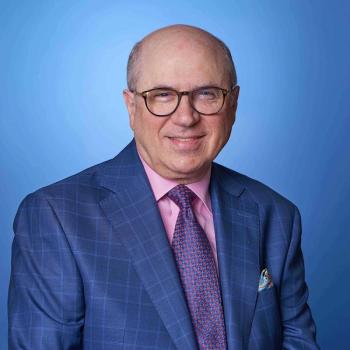
Policing and COVID-19 Disparities: Discrimination, Racism, and Xenophobia
A social determinants framework requires that we treat the parallel diseases of COVID-19 and racism as equally detrimental to the health and well-being of our patients.
COMMENTARY
What Happens to a Dream Deferred?
by Langston Hughes
Does it dry up
Like a raisin in the sun?
Or fester like a sore—
And then run?
Does it stink like rotten meat?
Or crust and sugar over—
like a syrupy sweet?
Maybe it just sags
Like a heavy load.
Or does it explode?
Since early 2020, the US has been in the midst of a worldwide pandemic due to a deadly coronavirus disease (COVID-19). Physicians, per their oath, “leaned in” to serve on the front line, prevent further spread, and treat the sick. To date, COVID-19 continues to challenge public health infrastructure, out-pace hospital and physician capacity, make people ill, and kill on a global scale. Much the same can be said about the not so novel racism virus. Its current and tragic toll upon generations of racial and ethnic minority Americans (eg, African Americans, Arab Americans, Asian Americans, Hispanic and Latino Americans, and Native Americans and Pacific Islanders), continues to make our society sick, contributing to accelerated aging and premature morbidity and mortality.
Although the US was founded on “liberty and justice for all,” discrimination, racism, and xenophobia existed worldwide prior to the country’s birth and continues to persist. One can argue racism is a much deadlier, more virulent, and more pervasive disease than COVID-19. Like crabgrass and thorny weeds in a beautiful perennial garden, both must be extinguished for the US to reach its full promise. Considering the changing demographics in the US: an increasingly minority, female, and aging society (ie, a minority majority society), it is our imperative to do so.
Under the emerging coronavirus shadow and as the US rapidly ascended the COVID-19 climb curve, young and old people became infected and died, including people without predisposing conditions. No person or community was immune as health professionals and scientists primarily focused on developing COVID-19 public service announcements, flattening the curve, and inventing an effective vaccine.
On February 23, 2020, there were 53 cases of COVID-19 in the United States.1 Mr Ahmaud Arbery,
On March 13, 2020, there were 565 cases and 8 deaths due to COVID-19 nationwide.1 Like others across the country, our university and clinics began to shutter and a “stay at home” order was implemented. In Louisville, KY, just after midnight, a no-knock narcotics raid was conducted on the home of Ms Breonna Taylor, a
On May 5, 2020, there were 1,173,257 cases and 62,806 deaths due to COVID-19 nationwide.1 Mr Arbery’s death finally received national attention when the video began circulating on social media. Like Mr Arbery, the circumstances surrounding Ms Taylor’s death was delayed until shared on social media.
Two defining moments occurred on May 25, 2020. There were 1,592,599 cases and 92,762 deaths due to COVID-19 nationwide.1 Mr Christian Cooper an
Reminiscent of fiction (eg, Harper Lee’s book To Kill a Mockingbird) and consistent with real cases (eg, 1921 Tulsa riots), Mr Cooper’s experience was the latest in a long familiar pattern of a white person making troubling false accusations associated with serious crimes (eg, theft, rape, and murder) against black people (especially black men), leading to further criminal injustices including trial, criminal convictions, and imprisonment (eg, Central Park 5).5,6 There are numerous false accusations associated with everyday activities made against minorities across the age (including black children), gender, and income spectrum, which prompted several hashtags: #Driving/WalkingWhileBlack, #BarbequeingWhileBlack, #GolfingWhileBlack, #SellingLemonade/WaterWhileBlack, #SwimmingWhileBlack, #DrinkingCoffeeWhileBlack, #StudyingWhileBlack, and eventually
May 25, 2020, was also the day an unarmed 46-year-old African American man,
They and onlookers listened as Mr Floyd pleaded, “please, please, please . . .” and “I can’t breathe” (a familiar refrain) more than 17 times, called for “Mama” (who died 2-years before), and stated, “they are trying to kill me” multiple times.11,12 The last 3-minutes, Mr Floyd lay pulseless and motionless as the officer (with his left hand in his uniform’s pants pocket) rocked his knee into Mr Floyd's neck and defiantly looked into the camera and eyes of onlookers. The officers made no attempt to revive Mr Floyd and prevented the EMTs from doing so. Attempts to revive him once in the ambulance failed; Mr George Floyd was pronounced dead at 9:45 pm CST in the hospital.9,10
It has been said that a child will lead us; and this time it was a courageous 17-year-old,
Protests erupted in the streets of Minneapolis and the 4 officers involved were fired on May 26, 2020. Two different autopsies determined Mr Floyd’s death was a homicide and revealed he had COVID-19 antibodies. The training officer had 18 misconduct complaints, several officer-involved shootings, and was disciplined on 2 occasions for excessive force. He was arrested and charged with third-degree murder and second-degree manslaughter on May 31, 2020.
In the meantime, protests (often peaceful) erupted across the rest of the US and continued across the globe (eg, Australia, France, New Zealand, UK) in response to Mr. Floyd’s and the many other deaths of black people due to police brutality. On June 3, 2020 the other 3 officers were arrested and charged with lesser crimes—aiding and abetting second-degree murder and aiding and abetting second-degree manslaughter—associated with Mr. Floyd’s death and the training officer faced a new charge of second-degree murder under Minnesota’s felony murder statute. This prompts the question, what would have happened if the cameras weren’t there?
Police officers are given the presumption of innocence, while black and brown people must prove theirs, even when there is video evidence of police violence directed at them. Deeply disturbing, there is something wrong and strangely familiar in watching the innumerable videos of unarmed black men dying due to police violence; revealing not only man’s inhumanity to man but how black people are devalued and dehumanized.
Although in 2019, black people represented 13% of the population, they represented 24% of the
Sleep deprived, but not post-call, on Sunday, May 30, 2020, we were weary, exhausted, and tired to the bone, but awakened early for our zoom research meeting to write a paper focused on the social determinants of health, disparities, and COVID-19. We’d been there before, and simultaneously acknowledging the familiar without words, confessed our angst, and processed our grief, sadness, and ongoing PTSD from witnessing another unarmed black man be dominated by police violence, murdered by police, and die alone in the middle of a city street. There were no good words. Although our numbers remain small, our shared phenotypes and history as minorities and physicians made it easier to understand and explain our feelings to each other regarding the police extinguishing Mr Floyd’s dreams and life, but it wasn’t okay.
We watched as the world attempted to process the erupting global protests against police brutality and racism. And, we witnessed peaceful protestors tear gassed and shot with rubber bullets in the US. As these major events intersected, large crowds gathered despite a global pandemic to voice their collective pain and frustration at continued violence toward black and brown people. We were in the midst of a perfect storm within an imperfect world where black and brown bodies are devalued, dehumanized, and criminalized; and where our phenotype, regardless of class, prompts over-policing, bad-policing, and criminal-policing in many of our communities; further magnifying health and educational inequities. It was a continued insult to injury within minority communities; and if we were honest with ourselves, we too feared being targeted when exercising, driving, or shopping, facing false accusations in the classroom and workspace, and ongoing discrimination and decreased opportunities within organized medicine, professional societies, scientific community, and academy.
We realized we were not just sick and tired of being sick and tired, but were exhausted from the silence, systemic oppression, and structural and institutionalized racism. How could we be safe when our brown and black brothers, fathers, uncles, and other relatives (including women and children) were not safe in the world? Were we deluding (or protecting) ourselves by wearing short or long white coats to shield us from the silencing, suffocation, killing, and execution of black and brown people as repeatedly witnessed on media? Yet, we witness or experience the same figuratively in the classroom, the boardroom, and in clinical spaces daily. We knew what could happen without the privileged white coat to shield us (maybe). What happens when we are just like any other black or brown person and perceived as being in the wrong neighborhood? Continued silence was no longer an option as we witnessed the disproportionate impact of educational, health, economic, and social injustices.
We intrinsically understand why minority communities have diminished trust in the police, health professionals, and health care systems via our lived experiences; we are them. Nonetheless, we lived on to share our narratives and perspectives, express our anger, and continue to carry unequal burdens and unheard stories. We believe, the medical community must not tolerate racist behavior in our society and must take an active role in understanding (and preventing) racism to promote healing.
The circumstances surrounding the death of Mr George Floyd and so many other unarmed African Americans by police as well as other ongoing disparities in the midst of the
As physicians we have a responsibility to ALL of our patients; embracing a social determinants framework requires that we treat the parallel diseases of COVID-19 and racism as equally detrimental to the health and well-being of our patients. The second article in the series, “
Dr Green is Professor, Department of Anesthesiology, Professor, Department of Obstetrics and Gynecology; and Professor, Department of Health Management and Policy, University of Michigan School of Public Health; Faculty Affiliate, Program for Research on Black Americans, Resource Center for Group Dynamics, Institute for Social Research and Faculty Associate, Institute for Health Policy and Innovation, University of Michigan; and Attending Physician, Back and Pain Center, Michigan Medicine, Ann Arbor, MI. Ms Gaston-Hawkins is a Doctor of Medicine Candidate, Class of 2021, University of Michigan Medical School. Dr Biljani is Interventional Pain Medicine Fellow, Back and Pain Center, Michigan Medicine, University of Michigan. The authors report no conflicts of interest concerning the subject matter of this article.
References
1. Jernigan DB. Update: public health response to the coronavirus disease 2019 outbreak: United States, February 24, 2020. MMWR. 2020:69:216-219.
2. Fausset R. What we know about the shooting death of Ahmaud Arbery. The Washington Post. June 24, 2020.
2. Wootson C, Brice-Saddler M. Attorney for man accused of killing Ahmaud Arbery says ‘this is not just another act of violent racism. The Washington Post. May 15, 2020.
3. Haines E. Family seeks answers in fatal police shooting of Louisville woman in her apartment. The Washington Post. May 11, 2020.
4. Stewart N. The white dog walker and #LivingWhileBlack in New York City. The New York Times. May 30, 2020.
5. Keyes A. A long-lost manuscript contains a searing eyewitness account of the Tulsa race massacre of 1921. Smithsonian Magazine. May 27, 2016.
6. Harris A. The Central Park Five: “We were just baby boys.” The New York Times. May 30, 2019.
7. Black Lives Matter.
8. Uwan E. There’s no going back to “normal”: once we accept, and grieve, that our old life is gone, we can build a better future. The Atlantic. June 13, 2020.
9. Hill E, Tiefenthaler A, Triebert C, et al. Eight minutes and 46 seconds: how George Floyd was killed in police custody. The New York Times. May 31,2020; updated June 10, 2020.
10. Kaul G. Seven days in Minneapolis: a timeline of what we know about the death of George Floyd and its aftermath. MinnPost. May 29, 2020.
11. Baker M, Valentino-DeVries J, Fernandez M, LaForgi, M. Three words: 70 cases. The tragic history of “I can’t breathe.” The New York Times. June 29, 2020.
12. Nevett J. George Floyd: the personal cost of filming police brutality. BBC. June 11, 2020.
13. Mannix, A. Minneapolis police cite “fluid” situation for troubling misinformation released after George Floyd death. StarTribune. June 3, 2020.
14.
Newsletter
Receive trusted psychiatric news, expert analysis, and clinical insights — subscribe today to support your practice and your patients.














